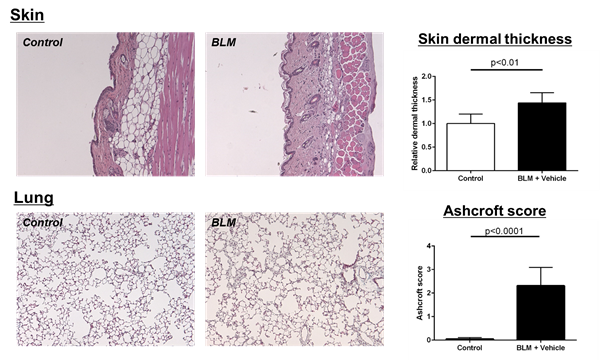SSc-ILD mouse model for simultaneous development of skin and lung fibrosis
We would like to introduce our SSc-ILD model – an improvement on our existing systemic scleroderma model – which is a more clinically relevant model of fibrosis that develops in both the skin and lungs.
Systemic scleroderma is a progressive, rare disease that causes fibrosis not only in the skin but also in tissues throughout the body, including the heart, lungs and kidneys. Pulmonary disease is a complication that has a particularly high incidence, and interstitial pneumonia has been reported as a major cause of death in patients with systemic scleroderma.
Inducing skin fibrosis via subcutaneous administration of bleomycin is a common animal model of systemic scleroderma, and we have been providing this model for some time. In order to provide a model with higher clinical correlation, we re-examined the conditions for creating this model and renewed it last year as a model that induces both skin and lung fibrosis simultaneously.
This model induces both dermal thickening of the skin and fibrosis of the lungs, which are typical pathologies in scleroderma.

Currently, there is no curative treatment for systemic scleroderma, only treatment of skin and lung symptoms.
We are therefore recommending this improved model to clients hoping to evaluate the efficacy of their drug candidates in treating both skin and lung symptoms of systemic scleroderma at the same time.
If you would like more information on this model or have any questions, please contact us.
